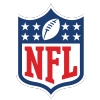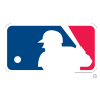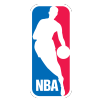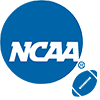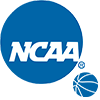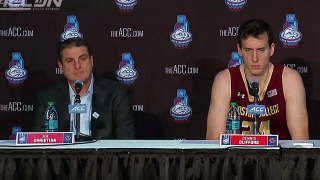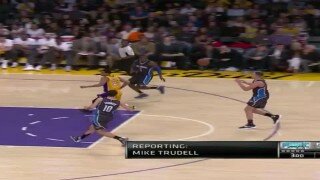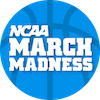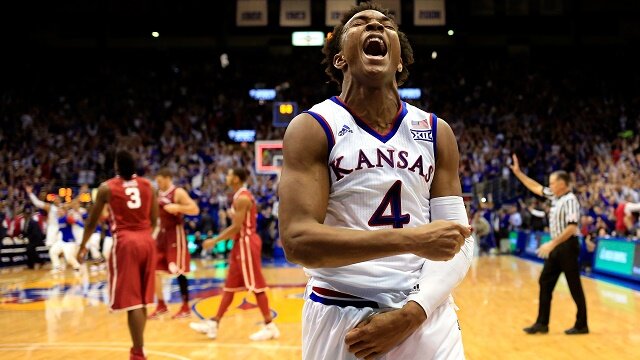Introduction
Quarterbacks are historically regarded as the riskiest position to select in the NFL draft. They typically have a high boom or bust rate, and a team selecting a quarterback first overall knows it is taking a high chance on whether its franchise player is more similar to JaMarcus Russell or to Peyton Manning.
I have always heard that offensive tackles translate the easiest from college football to the pros, but I wanted to do the research necessary to either prove or dispel that claim. I went through every top 10 pick in the NFL draft since 2000 (120 in all) and charted the player on several factors, such as years in the league and number of games started, number of Pro Bowl appearances, and percentage of seasons that were successful. Then I did the same thing for all 32 first round picks since 2000 (382 in all, minus the 2008 first round pick the New England Patriots forfeited, and Sebastian Janikowski in 2000 since I didn’t include kickers).
I wanted to see the effect of picking a player in the top 10 of the draft as compared to just taking a player in the first round overall, and whether there really was a difference.
How the Players Were Graded
Some of my research is purely my opinion. In determining whether a player had a successful season, I tried using my own judgment as best as I could. I researched the player to try to get a year-by-year breakdown on him or to see how fans of that team viewed the particular player. The results aren’t perfect; you could definitely make a case that some guys should be slightly different than I graded them. I ended up grading each player’s entire NFL career as a yes, maybe, or no.
Yes: Players that are a yes are no-doubters like Eli Manning, Calvin Johnson, Julius Peppers, or Joe Thomas. They’re players that are perennial Pro Bowlers or considered among the best at their respective position.
Maybe: These are the ones that you could definitely argue the most. Maybes were normally players that didn’t quite live up to their potential but weren’t a bust or players that switched positions or maybe players that changed teams (normally if a team lets a first round pick go, it means he has underachieved).
Leonard Davis is a maybe. He didn’t make it as the left tackle of the Arizona Cardinals but found success later in his career as a three-time Pro Bowl guard of the Dallas Cowboys. I can’t grade him as a yes because he was a bust for Arizona but because of his stellar several seasons with the Cowboys, he still passes. Michael Vick is a maybe. He wasn’t what the Atlanta Falcons thought he would be, but given his success with the Philadelphia Eagles also, he gets a maybe.
Players like Shawn Andrews (short career, but still two Pro Bowls and an alternate) got a maybe. Quentin Jammer was a maybe. He wasn’t worth the fifth overall pick for the San Diego Chargers, but he still gave them a solid career. Ben Watson was a maybe, and so were players like Ty Warren, Levi Jones, or Chris Hovan.
If a player was selected in the 2011 NFL draft and hasn’t really played yet, he got a maybe. Jake Locker is a maybe. So is Derek Sherrod. Neither really played. Blaine Gabbert got a no. That obviously doesn’t mean he can never develop, but as of now, of course he is a no.
No: If a player was a no, that typically means he gave the team no productive seasons. There were some exceptions. Jason Campbell was borderline; he wasn’t an awful quarterback but he lasted five so-so seasons in Washington, and I couldn’t justify giving him a maybe.
Many players were an obvious no: Charles Rogers, Levi Brown, Jerome McDougle, or Alex Barron. David Pollack of the Cincinnati Bengals received a no, even though his career was cut short due to a career-ending broken vertebrae. It’s extremely unfortunate for Pollack, but his injury after fewer than two seasons means the Bengals didn’t get their worth out of him, and ultimately that’s what the team is looking for when they draft a player.
Quarterback
There have been 32 quarterbacks selected in the first round of the NFL draft since 2000, 18 of them in the top 10 picks in the draft.
The 2004 class is by far the superior draft of the decade, as it yielded Eli Manning, Philip Rivers, and Ben Roethlisberger – three players that have combined for eight Pro Bowl selections and 20 successful seasons. To put that in perspective, the three of them make up one quarter of all the Pro Bowl selections earned by first round quarterbacks since 2000.
Michael Vick, Carson Palmer, and Aaron Rodgers each made multiple Pro Bowls as well and accounted for an average of five successful seasons apiece. (Vince Young made two Pro Bowls as well but I don’t consider 12 touchdowns and 13 interceptions in 2006 or 10 touchdowns and seven interceptions in 2009 to be successful).
Best 5 Picks: Eli Manning, Ben Roethlisberger, Aaron Rodgers, Philip Rivers, Cam Newton
Worst 5 Picks: JaMarcus Russell, Matt Leinart, Brady Quinn, Joey Harrington, J.P. Losman
Running Back
There have been 36 running backs taken in the first round since 2000, and 10 in the first 10 picks of the draft.
Just two running backs selected since 2000 are surefire Hall of Famers – LaDainian Tomlinson and Adrian Peterson (at the rate he’s going). They have combined for nine Pro Bowl selections and 15 successful seasons.
Some of the running backs on the list were borderline – I gave Ronnie Brown and Thomas Jones both a maybe. Brown wasn’t worth the No. 2 overall draft pick the Miami Dolphins spent on him in the 2005 draft, but he still had a productive career and made a Pro Bowl as master of the wildcat offense.
Jones was a flop in Arizona but rebounded to have five straight 1,000-yard seasons with the Chicago Bears and New York Jets. For the most part, many running backs on this list were disappointing, but most still put together several successful seasons – Brown, Jones, and Cedric Benson to name a few that fit that very description.
The 2005 draft was the most running back-heavy of them all, with three players going in the top five in the draft (two from the same school).
Best 5 Picks: LaDainian Tomlinson, Adrian Peterson, Steven Jackson, Chris Johnson, Shaun Alexander
Worst 5 Picks: Trung Canidate, Chris Perry, William Green, Ron Dayne, Laurence Maroney
Wide Receiver
There have been 48 wide receivers selected in the first round of the NFL draft since 2000, 19 of those going in the top 10 in the draft.
No receiver has gone first overall but five have been selected in the top three – Charles Rogers, Andre Johnson, Larry Fitzgerald, Braylon Edwards, and Calvin Johnson.
Most of the receivers on the list have been either a big hit or miss. Andre Johnson, Calvin Johnson, Fitzgerald, Reggie Wayne, and Roddy White were perennial Pro Bowlers, while players like R. Jay Soward, Travis Taylor, Rogers, Reggie Williams, Troy Williamson, and Ted Ginn have been colossal busts.
The 2009 draft class has arguably the strongest group of receivers, with Jeremy Maclin, Hakeem Nicks, Percy Harvin, and Kenny Britt looking like real finds, and Darrius Heyward-Bey and Michael Crabtree each starting to come around.
Best 5 Picks: Reggie Wayne, Larry Fitzgerald, Andre Johnson, Calvin Johnson, Hakeem Nicks
Worst 5 Picks: Charles Rogers, Peter Warrick, David Terrell, Rashaun Woods, Buster Davis
Tight End
For the most part, one or two tight ends are taken in the first round of each NFL draft. There have been 16 selected in the first round since 2000, and one each year from 2007 through 2010.
Only two tight ends have gone in the top 10 – Kellen Winslow, Jr. at number six overall in 2004 and Vernon Davis at sixth overall in 2006. Each of those two has been very productive, although maybe not quite worth the pick their respective team spent on them.
Best 5 Picks: Heath Miller, Dallas Clark, Jeremy Shockey, Todd Heap, Dustin Keller
Worst 5 Picks: Jerramy Stevens, Anthony Becht, Daniel Graham, Greg Olsen, Ben Watson
Offensive Line
58 offensive linemen have been selected in the first round of the NFL draft since 2000, and 19 in the top 10 picks. I grouped tackles, guards, and centers all together, since for the most part, the linemen were tackles.
Only eight have been guards and five have been centers, and no interior offensive linemen has gone in the top 10 overall since 2000. (Leonard Davis and Robert Gallery both changed their positions from tackle to guard).
Best 5 Picks: Joe Thomas, Jake Long, Nick Mangold, Steve Hutchinson, Chris Samuels
Worst 5 Picks: Jason Smith, Chris Williams, Kwame Harris, Kenyatta Walker, Stockar McDougle
Defensive Line
There have been 92 defensive linemen selected in the first round since 2000, with 29 of them coming in the top 10 picks. This by far the most of any position, meaning an average of nearly eight defensive linemen are selected in the first round every year. That’s about one-quarter of all players.
Sometimes it’s difficult to know whether a player was chosen as a defensive linemen or a linebacker, so I went by how Pro Football Reference’s draft guide classified the player.
Best 5 Picks: Julius Peppers, Kevin Williams, Haloti Ngata, Justin Smith, Richard Seymour
Worst 5 Picks: Vernon Gholston, Jerome McDougle, Jamal Reynolds, Courtney Brown, Johnathan Sullivan
Linebackers
There have been 35 linebackers selected in the first round since 2000, and just 10 of them in the top 10 overall picks.
I was surprised to see Jason Babin as a linebacker, but that’s how Pro Football Reference classified him. He is the classic example of a guy who received a maybe grade for his career – he was awful with the Houston Texans but has found success with the Tennessee Titans and Philadelphia Eagles.
Best 5 Picks: Patrick Willis, DeMarcus Ware, Terrell Suggs, Clay Matthews, Von Miller
Worst 5 Picks: Robert Thomas, Larry English, Bobby Carpenter, Ernie Sims, Rob Morris
Defensive Backs
I grouped cornerbacks and safeties together in this list. There have been 63 defensive backs selected in the first round since 2000, but just 15 in the top 10 picks.
Several of the players on here found success at a new position – Antrel Rolle had to switch to safety, and Devin McCourty will be doing the same. I also graded Patrick Peterson as a no for his 2011 season, since he was awful at cornerback, even though he made the Pro Bowl as a punt returner.
Best 5 Picks: Ed Reed, Troy Polamalu, Darrelle Revis, Nnamdi Asomugha, Earl Thomas
Worst 5 Picks: Tye Hill, Jamar Fletcher, Andre Woolfork, Willie Middlebrooks, Mike Rumph
Is There Really a Difference Between Whether a Player is Picked in the Top 10 or the Entire First Round?
Here are the final numbers I crunched for both top 10 draft picks and first round draft picks:
The average top 10 pick since 2000 averages 67.5 starts, 1.1 Pro Bowl selections, and 2.8 successful seasons. The average first round pick since 2000 averages 58.3 starts, 0.9 Pro Bowl selections, and 2.5 successful seasons. Top 10 picks make the Pro Bowl in 20 percent of seasons and have successful seasons about exactly half the time; first round picks make the Pro Bowl in 16.4 percent of seasons and have successful seasons 46.0 percent of the time.
What this tells you is that top 10 players amount to slightly more successful NFL careers than those selected in picks 11-32, but not by a significant amount.
There have been some awful choices in the top 10 picks (JaMarcus Russell, Charles Rogers, Matt Leinart, Courtney Brown) that bring the numbers down, and there have been some truly spectacular choices in the later first round (Nnamdi Asomugha, Reggie Wayne, Logan Mankins, Keith Bulluck).
So Which Positions Are the Safest and Which Are the Riskiest?
The first table is of top 10 picks, while the second table is of first rounders as a whole.
When I assigned every NFL first round draft pick as either a yes, maybe, or no, it gave me the above results. I viewed a player that had a yes or a maybe as passing; as I’ve said, maybes are often players that didn’t make it initially but still ended up making an impact in the league. Players that were a no just didn’t contribute much to their team, leaving their team regretting the fact that they selected them.
It’s difficult to say tight ends had the greatest success rate of top 10 draft picks, since there were only two and that isn’t a large enough sample size to truly say it. But for first round picks as a whole, tight ends graded at 81.3 percent for passing, meaning more than four out of five tight ends selected in the first round made a significant impact to their team. Even the three tight ends that graded as a no – Anthony Becht, Daniel Graham, and Jerramy Stevens – still made a contribution to the NFL.
Becht has started 134 games for five different teams, and he’s still in the league 11 years after he was drafted. Graham wasn’t the difference-maker the New England Patriots had hoped he would be, but he’s now started 117 games in a 10-year NFL career for three teams. And Stevens had a good season for the 2005 Seattle Seahawks that went to the Super Bowl, and he played in over 100 games as well.
Many of the tight ends taken in the first round probably weren’t quite worth the pick the team used on them. Ben Watson didn’t turn out to be as good as the Patriots had hoped, but he was good enough that I gave him a maybe. Using a sixth overall pick on Kellen Winslow, Jr. or Vernon Davis seems like a little bit of a stretch at this point, but these teams would have easily gotten their value had the player been picked in the later first round.
This makes tight end the safest position, with the entire order listed below:
1 – Tight End
2 – Linebacker
3 – Defensive Back
4 – Offensive Line
5 – Running Back
6 – Quarterback
7 – Defensive Line
8 – Wide Receiver
Linebackers typically pan out very well, although they’re often hit or miss. Of the 35 linebackers I charted, just one was a maybe. 25 were a yes and nine were a no. For the most part, even the players that were a no weren’t awful. Keith Rivers and Aaron Curry have a no at this point in their careers, but that doesn’t mean they can’t still make the pick worth it. Rivers is a solid starter, although not nearly worth the first round pick the Cincinnati Bengals used on him, and the Seattle Seahawks viewed Curry dispensable enough that they traded away their number four overall pick, but Curry has played just three years and could easily turn his career around.
Defensive backs were also successful. Very few completely bombed in the NFL. This position had the largest difference between top 10 picks and first round picks, with 80 percent of top 10 picks playing successful careers and just 60 percent of first round picks doing so. Only three of 15 top 10 defensive backs since 2000 received a no – Pacman Jones, Michael Huff, and Donte Whitner. Jones was a special case, as he couldn’t keep his head on straight, but he had the talent to be a star if he wanted it. Huff is a so-so player but because of how high he was picked, I gave him a no. And Whitner never should have been picked in the first round but if he had gotten picked where he should have gone, then he would grade fine.
Offensive line was my guess for the position that would translate the best. What didn’t help was that three players to go No. 2 overall didn’t make it as they should have – Leonard Davis, Robert Gallery, and Jason Smith. Davis went on to have a great career as a guard (although only for a few seasons). Gallery isn’t even that good as a guard. And so far, Smith is a total bust.
Jake Long, Joe Thomas, and Tyron Smith are all players that stepped right in from college ball to the pros and didn’t miss a beat. It also seems that offensive linemen can take several years to excel but they eventually make it – Bryan Bulaga and Trent Williams were both awful as rookies but stellar as second-year players. Three other offensive linemen graded as a no simply because of awful rookie seasons (James Carpenter, Danny Watkins, and Anthony Castonzo), but again, one bad season doesn’t even close mean they will never make it – I just had to give them a no at this point in their careers. Russell Okung was picked sixth overall and has been a bust for two seasons thus far, but given the rate at which offensive linemen normally translate, I think he will turn it around and be ok in the long run.
Running back is my least favorite position, as I have mentioned before. Look at the starting running backs in the game today. So many of them were taken in a round other than the first – LeSean McCoy, Ray Rice, and Matt Forte (second), Frank Gore, Jamaal Charles, Shonn Greene, and DeMarco Murray (third), Brandon Jacobs (fourth), Peyton Hillis (seventh), and Arian Foster, Pierre Thomas, Fred Jackson, and BenJarvus Green-Ellis (undrafted).
I was surprised to see the difference though between running backs picked in the top 10 overall and those picked in the later first round: Those picked in the top 10 had a successful career another 15 percent of the time. Running backs very rarely truly bomb – none of the three picked in the top five of the 2005 NFL draft were worth the selection, but all (Ronnie Brown, Cedric Benson, and Cadillac Williams) still had productive or semi-productive seasons.
Quarterback is extremely risky, and according to my results, a quarterback picked in the top 10 of the draft really had no higher chance of success than one picked anywhere else in the first round. Top 10 quarterbacks passed my test 50 percent of the time, as did those picked in the first round on the whole.
It’s scary to think that only about 25 percent of teams that pick a quarterback can look back and say they are truly happy with the pick – the ones I gave a yes are Eli Manning, Philip Rivers, Ben Roethlisberger, Aaron Rodgers, Jay Cutler, Matt Ryan, Matthew Stafford, and Cam Newton. The average quarterback picked in the top 10 of the draft since 2000 starts an average of just 54.5 games in his NFL career. I know, many of the players have not had a chance to finish their careers. Newton, Ryan, and Stafford will probably each add over 125 starts to those totals.
But since I compared the quarterbacks to other players taken in the first round since 2000, it’s on an equal scale. And the fact is that quarterbacks way too often don’t pan out like they should. Does that mean a team shouldn’t take a quarterback in the first round? Absolutely not. I’m merely pointing out the rate at which quarterbacks fail.
Defensive linemen finished seventh-best among my eight positional groups. This was my pre-research pick to finish dead-last. There were more colossal busts among the defensive linemen than probably any other position – Courtney Brown, Erik Flowers, Jamal Reynolds, Damione Lewis, Ryan Pickett, Ryan Sims, Wendell Bryant, Dewayne Robertson, Jerome McDougle, Johnathan Sullivan, Tyler Brayton, Kenechi Udeze, Erasmus James, Jamaal Anderson, Lawrence Jackson, and Jerry Hughes, to name a few. Defensive linemen seemed to have about the same success rate whether they were picked in the top 10 of the draft – 37.9/10.3/51.7 – or whether they were picked in the first round as a whole – 34.8/14.1/51.1.
This leaves wide receiver as the single most riskiest draft position in the NFL (according to my data since 2000). This surprised me immensely. The three best wide receivers in the game (Andre Johnson, Larry Fitzgerald, and Calvin Johnson) were all taken in the first three picks in the draft. Many of the game’s best receivers were taken in the first round. But there are also some huge misses. Charles Rogers was awful. So was Mike Williams. Michael Crabtree has been a bust. Same with Darrius Heyward-Bey and Ted Ginn, Jr., and Buster Davis and Anthony Gonzalez and Freddie Mitchell and Ashley Lelie. The 2000 draft (Peter Warrick, David Terrell, Travis Taylor, Sylvester Morris, and R. Jay Soward) and 2005 draft (Troy Williamson, Mike Williams, Matt Jones, Mark Clayton, even Braylon Edwards) are all-time worsts for wide receivers.
Even the 2009 draft, with four huge successes in Jeremy Maclin, Percy Harvin, Hakeem Nicks, and Kenny Britt, has disappointments at the top two spots – Heyward-Bey and Crabtree.
It’s shocking to think that the NFL draft is one of the most hyped events in football – scouts constantly analyze and critique every aspect of all the good players in college football, and still half of all players turn into busts. That’s not to say the scouts aren’t doing a good job; they’re substantially more qualified than I am, and they watch their film inside and out.
Sometimes, it’s factors beyond anyone’s control. Who would have thought David Pollack would have broken two vertebrae? Who could have foreseen JaMarcus Russell’s limited work ethic? How could Vernon Gholston go from being a physical freak in college to downright invisible in the NFL?
So what does this all mean? Does it mean a team should only draft tight ends, since they have the highest success rate? Not necessarily. But it should make a team think twice about drafting an explosive defensive end or a can’t miss wide receiver.
Maybe that player will turn out to be the next Julius Peppers or the next Calvin Johnson. No one really knows how any college football player will translate his skills to the NFL playing field. But if you want to play the draft safe and get the most for your pick, go for a tight end or a linebacker.


